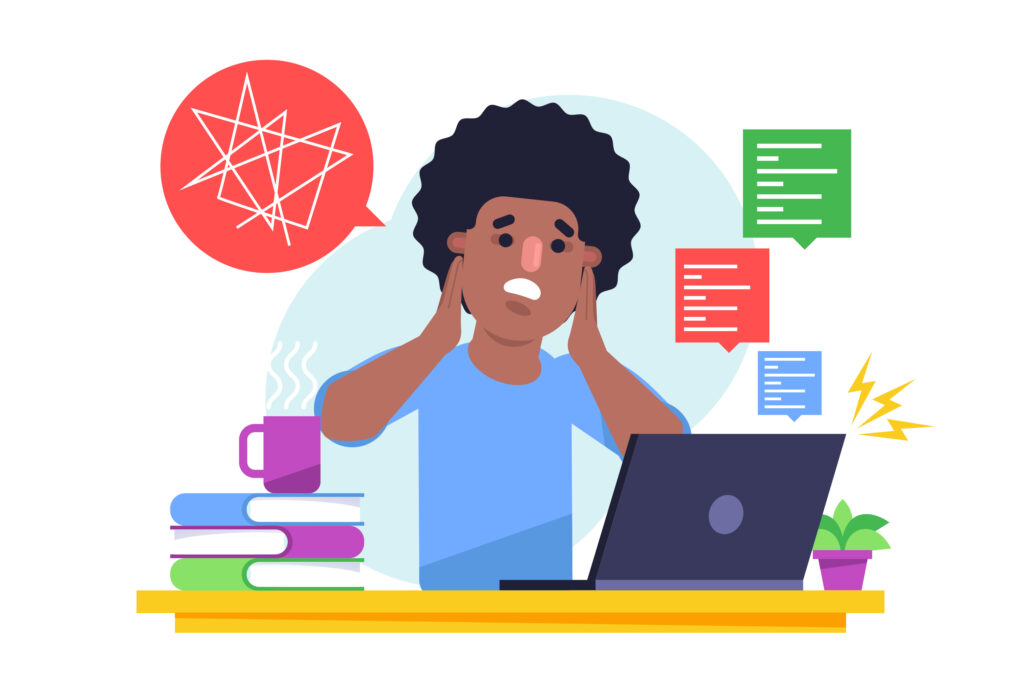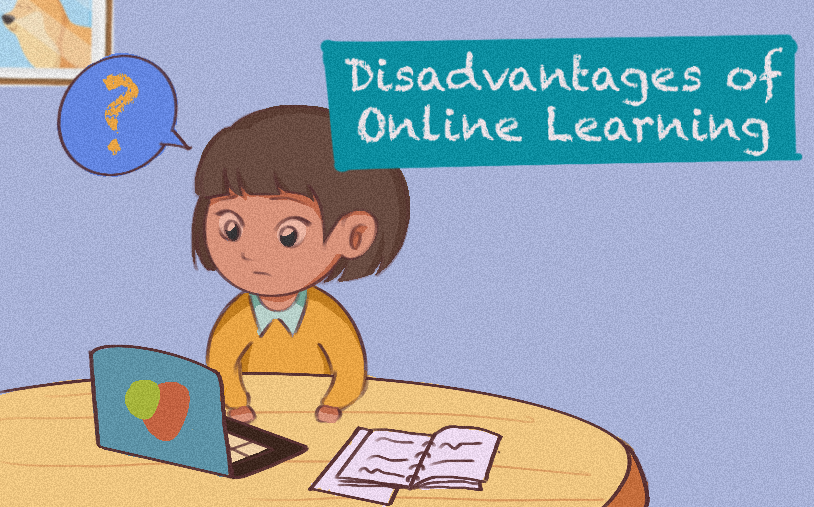In the digital age, the landscape of education is rapidly evolving. The advent of online learning has brought a new wave of opportunities, enabling students to learn from the comfort of their homes. This flexibility, coupled with the convenience of learning at one’s own pace, has made online learning a popular choice for many.
However, as we delve deeper into this topic, we’ll uncover some disadvantages of Online Learning. But before we dive into these challenges, let’s first appreciate the allure of online learning. Its accessibility, affordability, and the ability to learn from anywhere have made it an attractive option for many.
Yet, it’s important to remember that while online learning has its advantages, it’s not without drawbacks. In the following sections, we will unpack these challenges, shedding light on some of the common challenges that online learning presents that we as students (or their parents) should be aware of.
The Onset Of Online Learning Revolution
Back in 2020, when the COVID-19 pandemic was spreading rapidly, people from all over the world witnessed a situation like never before. Businesses crashed, Bustling cities became ghost towns, educational institutions were shut down, and entire countries were pushed into a state of complete lockdown. People were advised to stay indoors and avoid interacting with each other outdoors as much as possible to contain the virus from spreading.
That’s when a lot of businesses and educational institutions decided to conduct their respective schedules via online mode. Students from all over the world relied on the Internet to attend their classes.
While the COVID pandemic left for good, the online education system stayed even after lockdowns were called off and offline modes of attending classrooms became a feasible option once again. Thanks to the loopholes that online education fixed in the conventional education system, a lot of students preferred attending their lectures online.
And why not? The Internet offers the freedom of attending your lectures whenever and wherever you are in the world so students can learn at their own pace following a routine that sits well with their schedule. Most of the courses that you can find online are much more budget-friendly than their offline alternates which also makes them a more viable option.
Above all, no matter in which part of the world you are, you can access courses offered by some of the best educational institutions in the world which otherwise would have been impossible for some students.
But as colorful a picture as these advantages of online learning might paint in your mind, the truth is that the online education system is not perfect either.
Just like anything else, there are some drawbacks associated with this system that you should be aware of. In the next section, we will be discussing some of the common drawbacks of online education systems which will help you understand their efficiency better and offer you a new perspective.
10 Disadvantages of Online Learning for Kids
1. Distractions
While digital devices can be a great tool to aid your child’s learning process, they can sometimes become a roadblock in their learning journey as well. As dynamic and useful as they might seem, the harsh reality is that a smartphone or a tablet is designed in such a way that it lures the users to spend as much time on it as possible. Children can easily lose focus and start using social media sites, games, and other applications that don’t contribute to the desired goal, which is learning.
You’ll be surprised to see how easily an adult, let alone a child, can lose their focus by a simple chime of notification on their phones.

2. Less Interactive Sessions
As efficient as online classes might get in terms of the flexibility they offer as to when and where someone attends their classes, one aspect that they’ll always lack is face-to-face interaction with the tutor.
This might seem like something insignificant when weighed against all the advantages that online classes offer, but when we take a deeper dive, we will realize that this single aspect outweighs them all to a certain extent. A good tutor sets a positive example for his students and engages the entire class, thus motivating students to perform well and enabling them to understand a topic better.
3. Less Motivation
During a conventional offline lecture, students are usually motivated to do better by observing the general trend their batchmates are following. If they realize that they are doing poorly when compared to the average statistics in their classroom, they are motivated to study harder and improve their grade so that they don’t end up lagging behind their peers.
On the contrary, when a student is left on their own during an online lecture, they usually feel less motivated since they are unable to analyze their position better to tune their efforts accordingly.
4. Limited Support
Another drawback of online education is that students don’t have full access to their teachers to ask doubts as conveniently as they would had it been an offline lecture. Also, the learning resources provided with the online lectures are limited in nature, but when we learn from a teacher in person, we have the freedom to ask a question whenever we encounter a doubt.
5. Dependence On Technology
Imagine a scenario when you have an exam due in 24 hours and just about the time you sit down to study the most important topic, your Internet service dies. A similar situation could be the one where our laptop or smartphone is experiencing some technical issues because of which it is unable to function smoothly.
In both of these situations, the learning process of a student can be severely affected because of technical issues that often take some time to resolve. As a student, one can easily imagine how serious a problem this can be since a significant amount of our time has been compromised trying to fix the error.
6. Compromised Communication Skills
Apart from the ‘Hard’ Skills or the technical knowledge of how things work in the domain we’re studying, Schools also help a child develop the ‘Soft’ skills necessary to succeed. Soft Skills or People Skills refer to one’s ability to make friends and talk to new people to expand their network.
The ability to communicate with one’s peers effectively is a huge part of a person’s success when they grow up and become a working professional. Being aware of the necessary etiquette while communicating with someone based on where they stand in the corporate chain with respect to your position along with being able to easily make positive connections with new people are some skills that make someone well-perceived as an adult.
7. Extended Screen Time
Remember how we are always bugging our children to spend less time on their phones and laptops as it is not good for their health? Something that online education has not helped with in that argument is reducing screen time. On the contrary, online education is becoming one of the leading reasons for increased screen time among children.
Staring at bright screens for an extended period can induce several health-related problems like straining your eyes for long enough that it affects your eyesight, joint pain because of sitting in a poor posture, laziness because a lot of students prefer watching their lectures lying on a couch or bed, and even increased body fat since they don’t have to move around during their lectures at all.

8. Teachers Cannot Gauge Student Engagement
One of the best things about the conventional offline education method is that the teacher can gauge the engagement level of the students and modify their teaching strategy accordingly in real-time. However, this situation is often a luxury when it comes to online classes because analyzing the effectiveness of your teaching strategies on a video call is usually not feasible.
Online lectures often become monotonous and less interactive, thus compromising the efficiency of the lectures heavily.
9. Less Flexible Lectures
During an offline lecture, it is often observed that if students are facing difficulties understanding a particular concept, the teacher modifies the syllabus accordingly and teaches them the basics first so that they understand the complex topics better.
However, when it comes to eLearning, most of the lectures are pre-recorded and they don’t offer the luxury of explaining a related topic should you need it to understand the topic better. Some teachers often conduct ‘doubt sessions’ to address the questions of students at frequent intervals but it is just not as flexible as offline classes.
10. Miscellaneous Cost
One disadvantage of eLearning that often gets shadowed by the fact that “online courses are cheaper than offline courses” is that a lot of people fail to account for the miscellaneous investments that tag along.
Conventional schooling methods require no investment other than a pen and a notebook, whereas online education demands a decent device with appropriate specifications like a laptop, tablet, or smartphone to watch the lectures.
Students also need access to a stable internet connection to ensure no delays and data limits. This can be a one-time charge or a recurring charge, but still, there are a lot of students who find it financially draining given their financial status.
What Can Parents Do?
As parents, we understand that it can put us in a difficult position when it comes to choosing which option is the best for our children. With so many opinions floating around the Internet, it can be difficult to decide if the online mode of education is better than the conventional one or vice versa.
However, the key to the solution here is addressing the gray zones that exist between opting for either an online mode of education or an offline mode of education for your child. It is advised to enroll your children in an educational institution that offers an offline mode of conducting lectures so that your child can experience the flexibility, engagement, and social interactiveness of an offline learning environment.
Along with that, to ensure that your children get the best of both worlds, you can enroll them in a supplemental online course offered by a reputed institution so that they can experience the pros of an online learning environment as well. If enrolling your children in an online and offline course simultaneously will impact your finances negatively, there are a lot of good quality courses offered online by some institutions for free.
Also Read: 8 killer ideas for creative writing for kids
Addressing the fact that we cannot isolate our child to either of the learning environments completely plays a huge role in deciding if you want to lay more emphasis on online learning or offline learning. In any case, a clear balance should be made keeping in mind your learning goals, and various other factors that are subjective to each student.
Conclusion
Ever since the Coronavirus pandemic, the education sector has witnessed a noticeable reform in the form of an Online Education System. While there are several advantages like freedom to learn whenever and wherever that are associated with it, there are certain disadvantages of online learning as well that we should keep in mind.
It becomes especially important for us as parents to curate a learning system and environment that suits the learning goals of our children the best. We cannot depend entirely on either online learning or offline classes as both of these systems have their own set of pros and cons therefore it’ll be best if we can gauge which one of the following our child feels more comfortable in and how it will complement the other aspects of their learning journey.
The primary goal of this blog is to familiarize parents with the lesser talked about side of online learning which are its disadvantages, not to create an environment of fear but to spread awareness.




